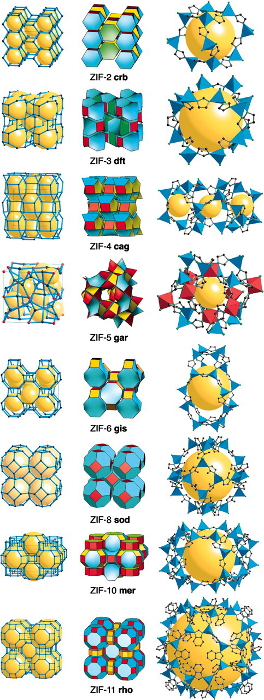Modeling the stability of zeolitic imidazolate frameworks (ZIFs) with the ACKS2 model
Modeling the stability of zeolitic imidazolate frameworks (ZIFs) with the ACKS2 model
Promotor(en): T. Verstraelen /MM_14_MODEV_03 / Model and software developmentMetal-organic frameworks (MOFs) are microporous crystalline materials, comprising metallic clusters or chains connected by organic linker molecules, forming a scaffold-like network with cavities and channels that can accommodate guest molecules. The first MOFs were synthesized by Yaghi in 1999 and, because of several applications in sustainable technologies (hydrogen storage, CO2 capture, ...), MOF research has expanded exponentially ever since. In industrial applications, the mechanical strength of a MOF crystal is of crucial importance. Upon synthesis, one obtains a powder of micrometer sized crystals, which are then compressed into pellets that fill up a reactor vessel. It is yet unclear how/if different MOFs remain crystalline in this shaping process. With molecular dynamics (MD) simulations, one can study the stability of MOFs under pressure at the length scale of a few nanometers. Upon the application of an external pressure, one can follow the formation of defects or even the complete amorphization of the material in full atomistic detail.

One of the main challenges in MD simulations is the efficient and accurate computation of the energy and the forces acting on the atoms. One can run very accurate (yet expensive) simulations with quantum-mechanical models for the electronic structure, but this is only feasible for one or two unit cells and a limited number of time steps. Alternatively, one can use computationally efficient (yet approximate) empirical force-field models, which are usually not capable of describing chemical reactions. However, the breaking and formation of chemical bonds is crucial to study the stability of MOFs. Zeolitic imidazolate frameworks (ZIFs) are a subclass of MOFs that have tetragonal metal centers and imidazolate linker molecules. It is well-known that zinc-nitrogen bonds are the weakest links in a ZIF framework. In this thesis, a force-field model will be constructed that captures the essential physics of the zinc-nitrogen bond breaking. The most challenging aspect is a correct description of atomic partial charges as function of the interatomic distance, which current reactive force fields completely fail to describe. Recently, an improved theory for atomic charge distributions was proposed at the CMM (Atom-Condensed Kohm-Sham DFT approximated to second order, ACKS2), which should be ideal to describe the zinc-nitrogen bond. The validation of the ACKS2 model for the charge distribution in ZIFs is one of the main objectives of this thesis.
- Study programmeMaster of Science in Engineering Physics [EMPHYS]

